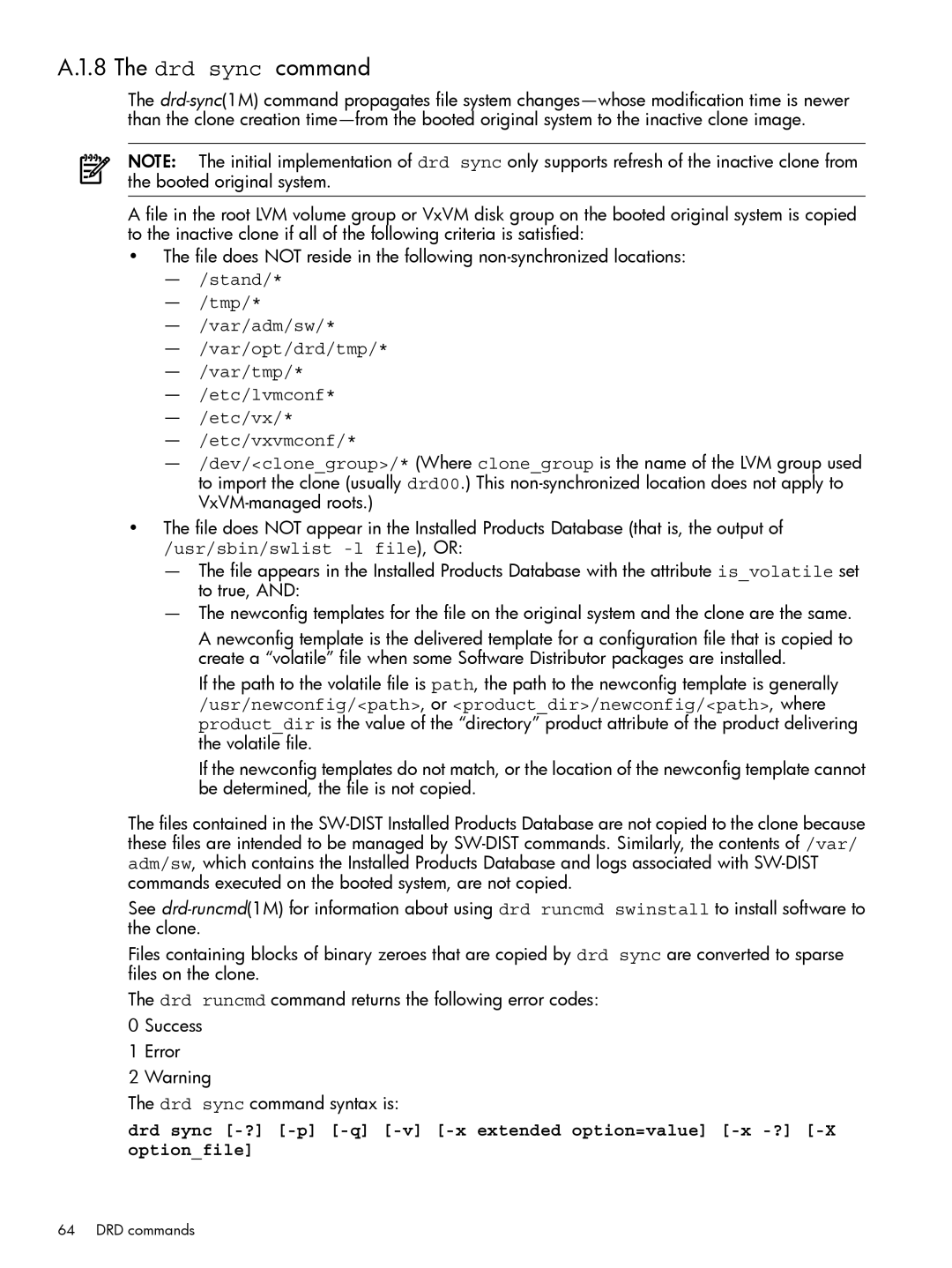A.1.8 The drd sync command
The
NOTE: The initial implementation of drd sync only supports refresh of the inactive clone from the booted original system.
A file in the root LVM volume group or VxVM disk group on the booted original system is copied to the inactive clone if all of the following criteria is satisfied:
•The file does NOT reside in the following
—/stand/*
—/tmp/*
—/var/adm/sw/*
—/var/opt/drd/tmp/*
—/var/tmp/*
—/etc/lvmconf*
—/etc/vx/*
—/etc/vxvmconf/*
—/dev/<clone_group>/* (Where clone_group is the name of the LVM group used to import the clone (usually drd00.) This
•The file does NOT appear in the Installed Products Database (that is, the output of
/usr/sbin/swlist -l file), OR:
—The file appears in the Installed Products Database with the attribute is_volatile set to true, AND:
—The newconfig templates for the file on the original system and the clone are the same.
A newconfig template is the delivered template for a configuration file that is copied to create a “volatile” file when some Software Distributor packages are installed.
If the path to the volatile file is path, the path to the newconfig template is generally
/usr/newconfig/<path>, or <product_dir>/newconfig/<path>, where product_dir is the value of the “directory” product attribute of the product delivering the volatile file.
If the newconfig templates do not match, or the location of the newconfig template cannot be determined, the file is not copied.
The files contained in the
See
Files containing blocks of binary zeroes that are copied by drd sync are converted to sparse files on the clone.
The drd runcmd command returns the following error codes:
0Success
1 Error
2 Warning
The drd sync command syntax is:
drd sync
64 DRD commands
